In recent years, the number of snack consumers and the average per capita snack consumption have noticeably increased. People's attitudes towards consumption have also shifted, with many believing that eating snacks can help divert their attention from stress and relieve pressure.
As the market and consumer habits evolve, snack manufacturing companies are experiencing fierce competition. Simultaneously, the industry emphasizes product quality and innovative development, making significant strides in production technology, process management, quality control, and product innovation.
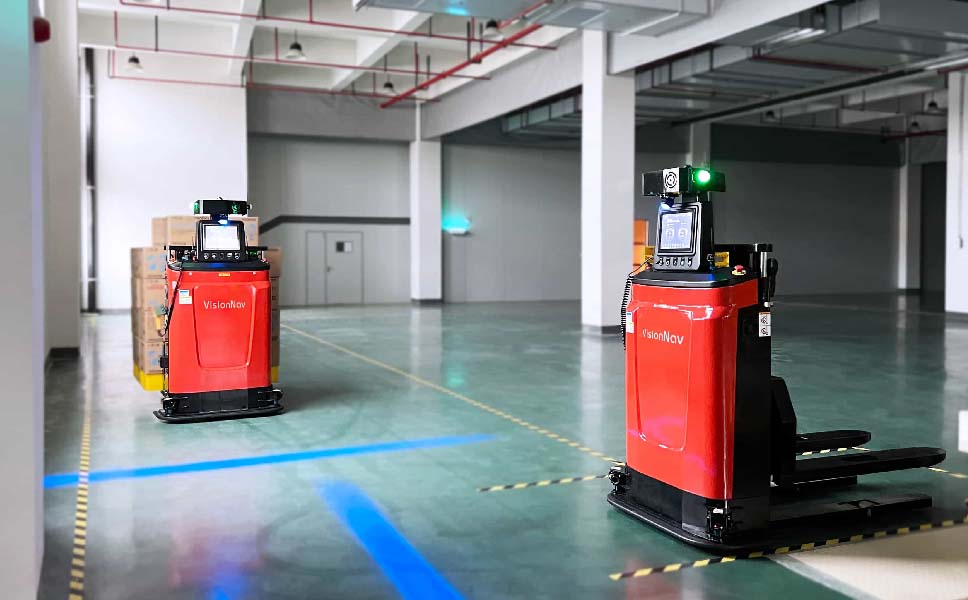
Dual - AGVs are shuttling in the warehouse
Our client is in the food manufacturing industry, and their workshop mainly produces candy and biscuit products. To improve efficiency and maintain a sustainable workflow in the workshop, they have adopted VisionNav's intralogistics solution. This solution enables automated management of finished product inventory through autonomous forklifts and the Robot Control System (RCS).
VisionNav has integrated multiple VNSL14 pallet stacker AGVs with the RCS system as part of the project's on-site workflow. By connecting this system to the customer's Manufacturing Execution System (MES), they have established a seamless flow of logistics information management. Autonomous forklifts interact with various automated devices, such as docking conveyors, stations, and rolling doors, during the operational process, thus achieving end-to-end automation.
Automated Workflow
Product Warehouse
After the products are processed in various workshops, manual workers scan and link the finished products with their corresponding material information. Subsequently, they use a Personal Digital Assistant (PDA) to issue tasks for the products' warehousing. VisionNav's RCS system receives the warehousing tasks and schedules the VNSL14 autonomous forklift to proceed to the finished product offloading area for material storage and handling.
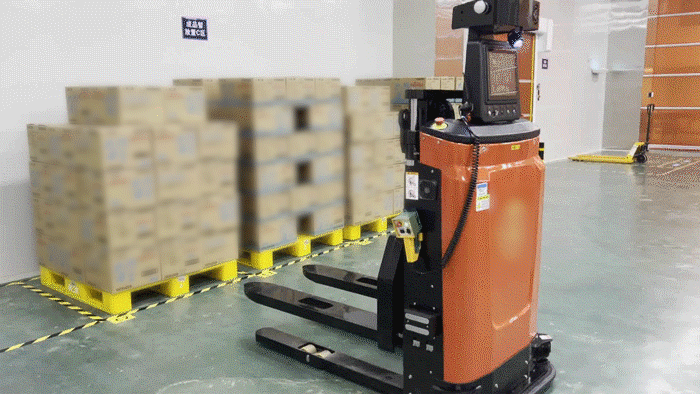
VNSL14 is picking up the goods
The VNSL14 transports the finished products to a designated warehousing docking station. Through system integration, the autonomous forklift interacts with the lifting equipment at the docking station to determine if it is ready to receive the goods. The autonomous forklift unloads the products inside the lifting equipment if the conditions are met. Once the autonomous forklift has completed the unloading process and exits the lifting equipment, the equipment lifts the products. It aligns them with the production line to achieve the warehousing of the finished products.
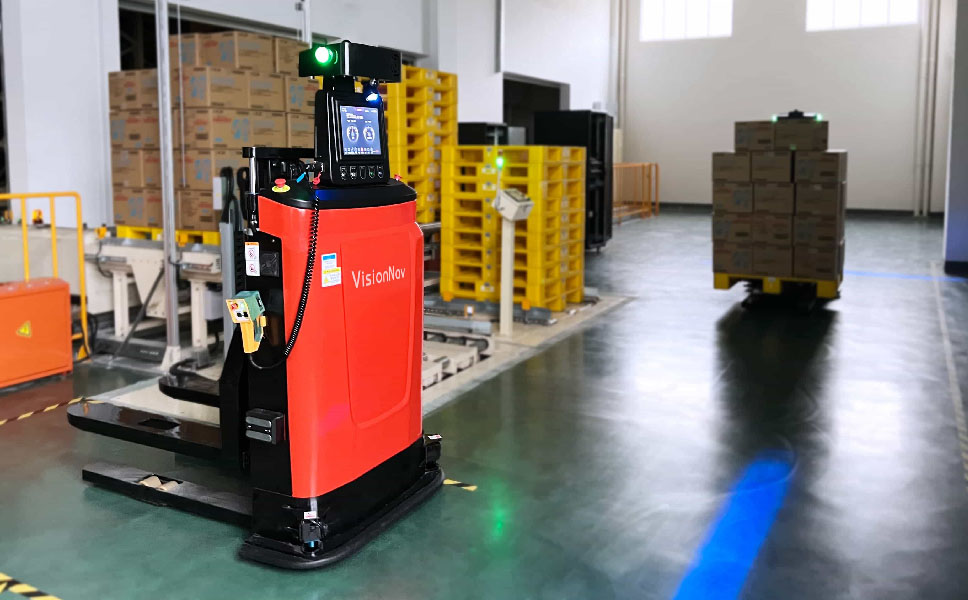
Dual - AGVs are shuttling in the warehouse
Empty Pallet Outbound
When the conveyor is ready for empty pallets, a manual worker issues an empty pallet replenishment via a PDA. The RCS receives the task and schedules the VNSL14 autonomous forklift to the designated outbound docking station. The VNSL14 then determines if picking up the empty pallets is safe. If it is deemed safe, the autonomous forklift picks up the empty pallets and transports them to the designated empty pallet storage location.
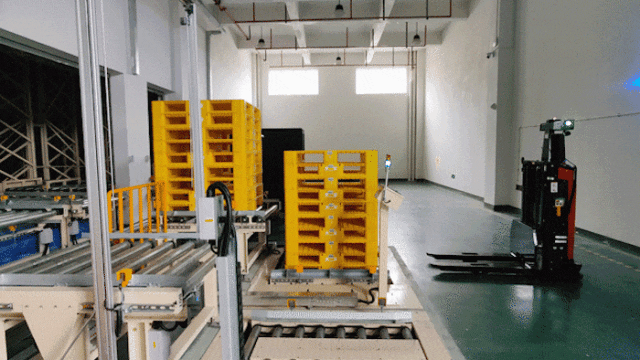
VNSL14 is docking conveyor
Logistics Better
Sustainable Workflow
Forklift drivers require specific skills and qualifications and must be certified to operate. However, manufacturing companies have been facing challenges such as difficulties in recruitment, high employee turnover, and costly training. These issues have led to an over-reliance on manual processes, resulting in high labor intensity and error rates.
To address these challenges, the VisionNav intralogistics automation solution significantly reduces labor intensity and simplifies processes. This helps companies save on labor costs and decrease error rates. By implementing this automation solution, companies can reduce their reliance on manual operations, leading to fewer errors caused by human factors. The automation enhances production efficiency and accuracy, enabling businesses to improve overall operational efficiency, reduce costs, and enhance competitiveness.
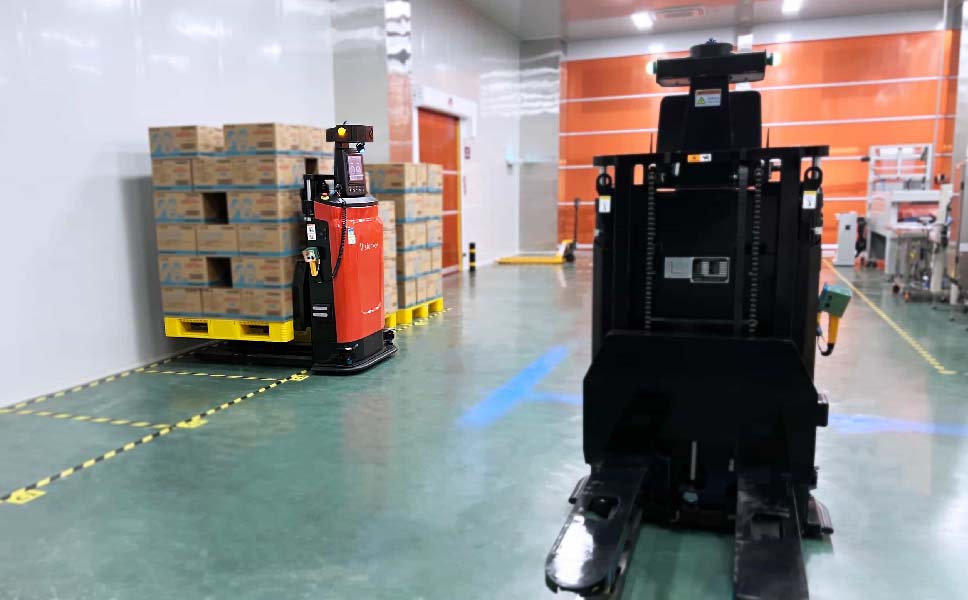
Warehouse Automation
Finished product inbound and outbound processes are typical scenarios in manufacturing. VisionNav optimizes and transforms the intralogistics workflow within the factory, streamlining material information flow. By integrating VNSL14 with external devices, the system automatically handles loading and unloading tasks, achieving automation in finished product inbound and outbound operations. This automation contributes to automated warehouse management, providing valuable assistance to customers pursuing efficient and automated warehousing practices.
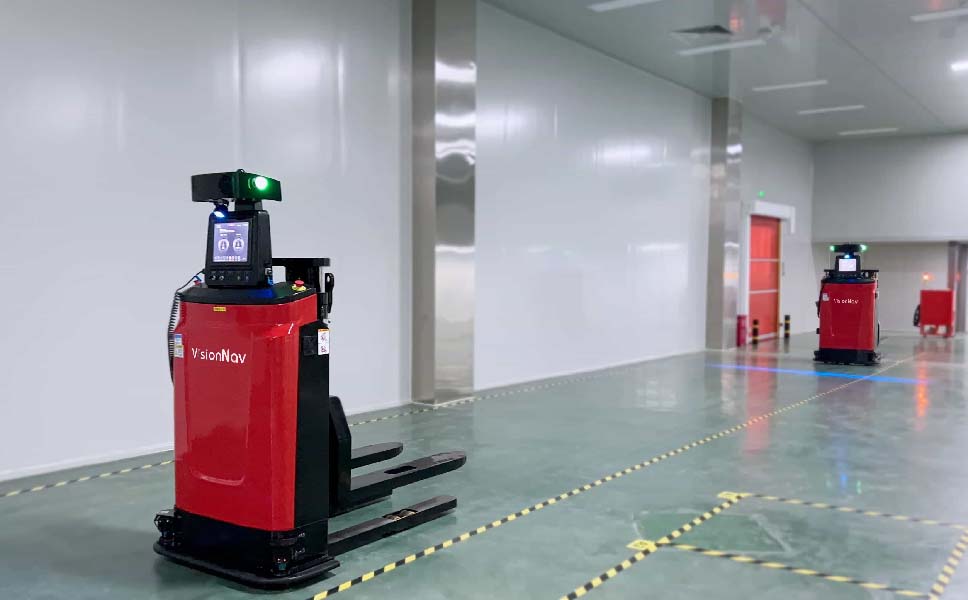
About VisionNav
VisionNav® Robotics is a global supplier of autonomous industrial vehicles and intralogistics automation solutions. Based on Machine Learning, Environmental Perception, Deep Machine Learning, and Servo Control technology, VisionNav has developed nine product series for full-stack scenarios to automate industry logistics. VisionNav has served more than 30 countries and deployed 350+ projects around the globe, and partners with 50+ Fortune 500 companies, covering auto manufacturing, tire, food, petrochemical, e-commerce, 3PL, pharmaceutical, and other industries.
Media Contact
Iris Chen
xchen@visionnav.com